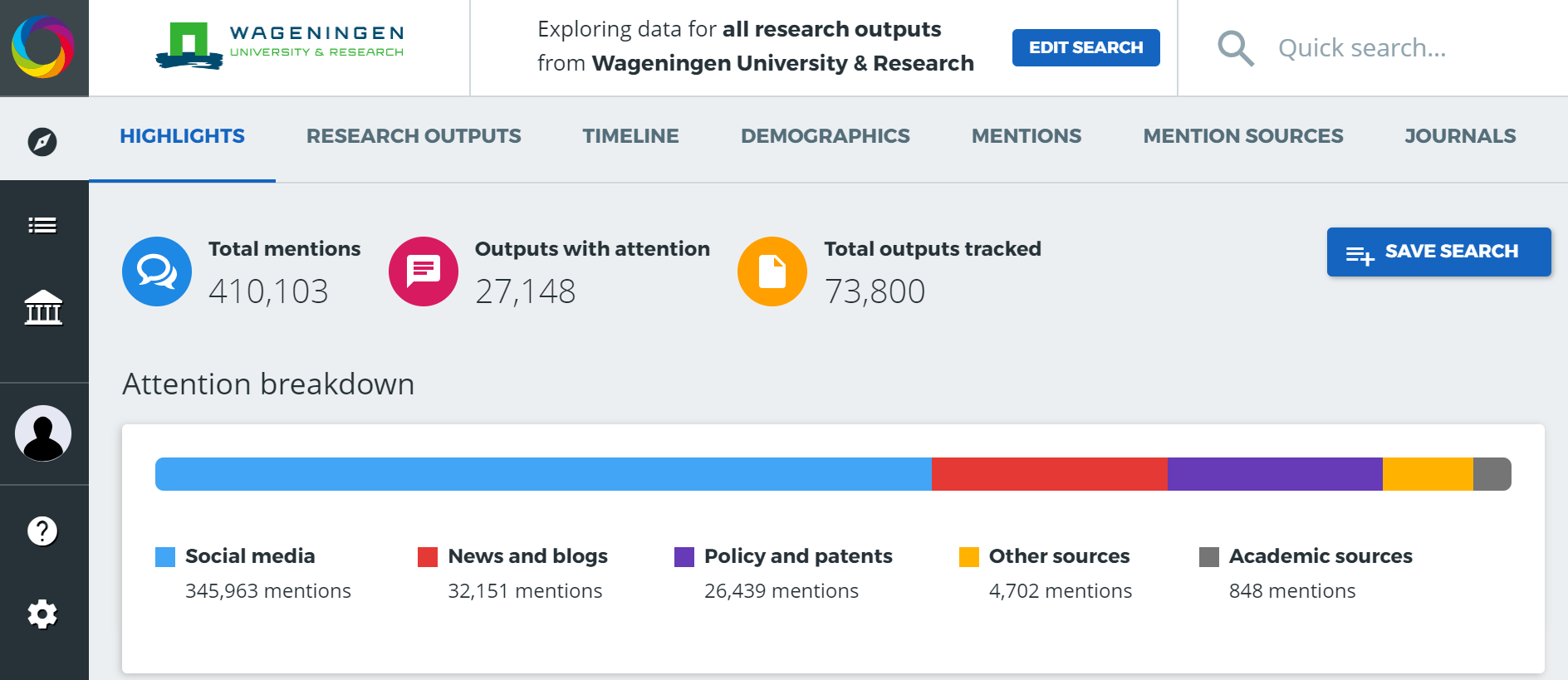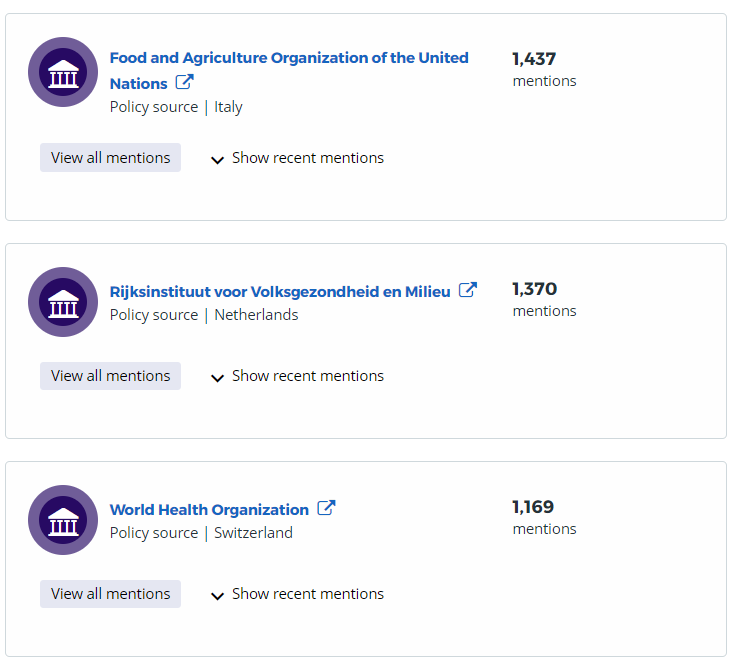Find out who is talking about your work with Altmetric Explorer!
When you work as a researcher, you are frequently asked to prove the impact of your research – whether in a grant proposal or for an individual or group evaluation. The traditional way of determining the impact of your research is by counting the number of citations to your scientific publications, sometimes normalized to the number of citations that other publications receive in the same field over the same period.
There are some known limitations to this approach though:
- It takes time (several years) to accumulate citations
- It is only applicable to scientific publications
- Only one type of impact is determined – it doesn’t take into account the impact of your research outside the academic world.
There is now an established additional method to determine who is talking about your research within and outside the academic world: Altmetrics.
What are Altmetrics?
Altmetrics are metrics that keep track of how often your publications were mentioned in social media, in blogs, in the media, in policy documents, and more. There are many advantages of using Altmetrics alongside the more traditional citation-based metrics:
- There is no time-delay: the number of mentions on social media such as Twitter and Facebook will be visible immediately;
- You get a feeling for who is your audience and where your research is being discussed;
- They apply not only to scientific publications and books, but also to reports, data, software and other research output.
Sources
Wageningen University & Research now has access to the Altmetric Explorer database, owned by the data science company Altmetric. This database currently contains over 125 million mentions (references) of nearly 28 million research outputs. The sources that Altmetric scans for mentions include social media, multimedia (YouTube, Reddit), public policy documents, mainstream media, reference managers, and more (click here for an overview). These sources are scanned for ID’s of research output, such as a DOI (digital object identifier), PubmedID or ISBN. In addition to searching for ID’s, they use text mining to find research output.
Altmetric Explorer
If you want to check out Altmetric Explorer, go to this page and enter your WUR email address. Next choose the WUR as your entry point; you may need to login in the WUR network here. First you will arrive at the highlights page. This is an overview of all research outputs from Wageningen University & Research that are known to Altmetric Explorer. You can easily edit this search to limit the research output to for example a certain type of output, a department or author, subject, journal, etc. On the other hand you can also extend the database to the full altmetric database.
In this example we do a search on all research outputs from WUR in April 2020.

The results of the search are displayed in different tabs. The highlights tab shows the attention breakdown – the number of mentions in the different media as well as the top outputs, journals, affiliations, etc. If you want to zoom in on the research outputs that were mentioned, go to the tab research outputs. Here you see the research outputs with their distinctive Altmetric donut.

The different colors of the donut represent the type of mention. Each donut is accompanied by an attention score, which is simply a weighted count of the amount of attention the output received. The timeline tab shows the number of mentions over a selected period of time, whereas the demographics tab shows a world map with number of mentions per country. In the mentions tab, you can read each individual mention, while the mention sources tab summarizes the sources in which the mentions were found. For example, the current search on all WUR output shows that the top three sources that mention WUR output are the FAO, the Dutch RIVM and the WHO. The final tab shows the journals that were mentioned.
What’s in it for me?
Why would all this be interesting to you as a researcher? We have listed a few reasons below:
- If you have recent publications, they probably didn’t receive many citations yet, making it harder to prove the impact of your research. Altmetric explorer will search for mentions of your research as soon as it is published, without delay. This gives you an idea of how your research is received – and even the opportunity to react on mentions – well before you receive the first citations. Zahedi & Haustein (2018) demonstrated that the number of Mendeley readers (as measured by Altmetric) was directly correlated with the number of citations a publication would receive.
- As Altmetric searches in many other sources than only the scientific literature, you get a feeling for the width of your impact – be it in numbers of people or in the type of documents that discuss your work. You may even be surprised to find mentions of your research in other fields than you expected.
- If you generally don’t publish scientific articles but you do publish reports, data or software, you will now be able to discover who is mentioning your output, as long as your output has a traceable ID. For WUR reports you can apply for a DOI yourself; check out this page to find out how.
- The demographics tab will give you an understanding of where in the world people are talking about your research, and for which organizations they work. This might give you new ideas for collaboration in and across your field.
- Knowing the channels in which your research is discussed will help you to prepare for an outreach strategy
– for example, using Twitter may reach more people in your field than Facebook or Mendeley.
In short: Altmetric Explorer is offering you the opportunity to discover who is talking about your work and what is being discussed! Altmetrics won’t replace the traditional citations, but can be seen as a valuable addition to get a comprehensive overview of the impact of your research.
Have you become curious about Altmetric Explorer and what it can do for you? Feel free to try it out for yourself! If you have any questions or if you would like to discuss how Altmetrics can benefit your personal situation, please contact Marleen Noomen or Ellen Fest.
Reference:
Zahedi, Z., Haustein, S., 2018. On the relationships between bibliographic characteristics of scientific documents and citation and Mendeley readership counts: A large-scale analysis of Web of Science publications. Journal of Informetrics, 12(1), 191-202, https://doi.org/10.1016/j.joi.2017.12.005.


